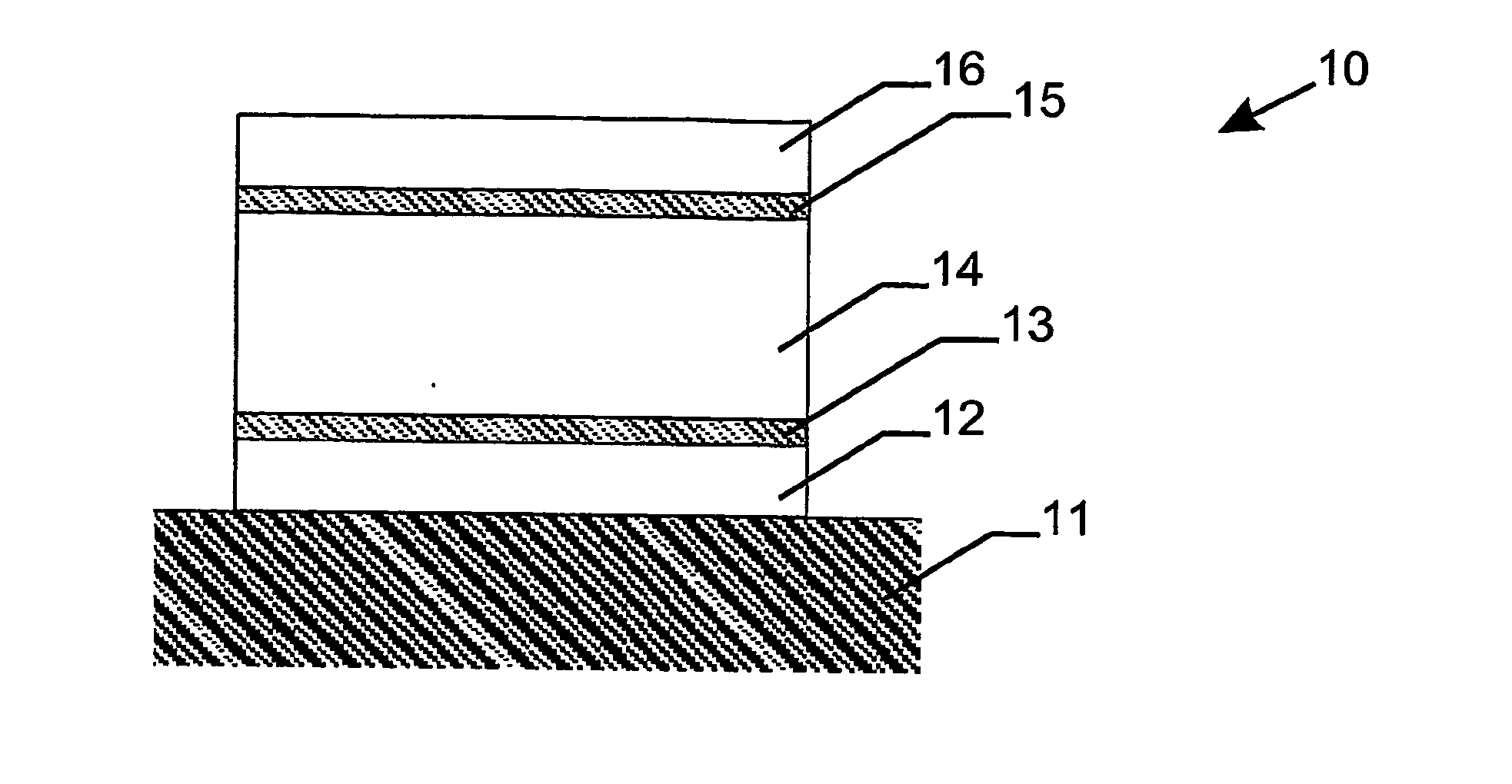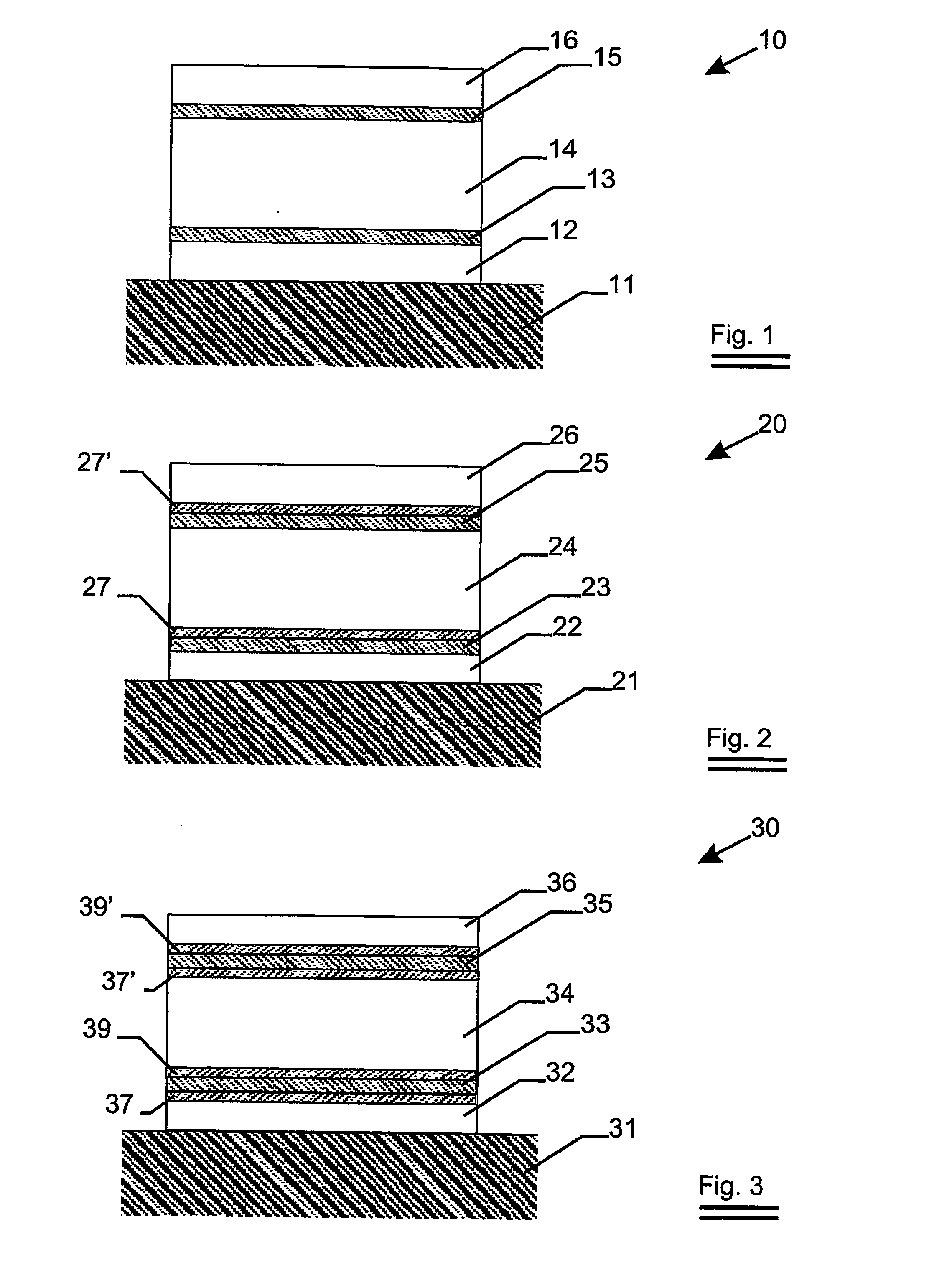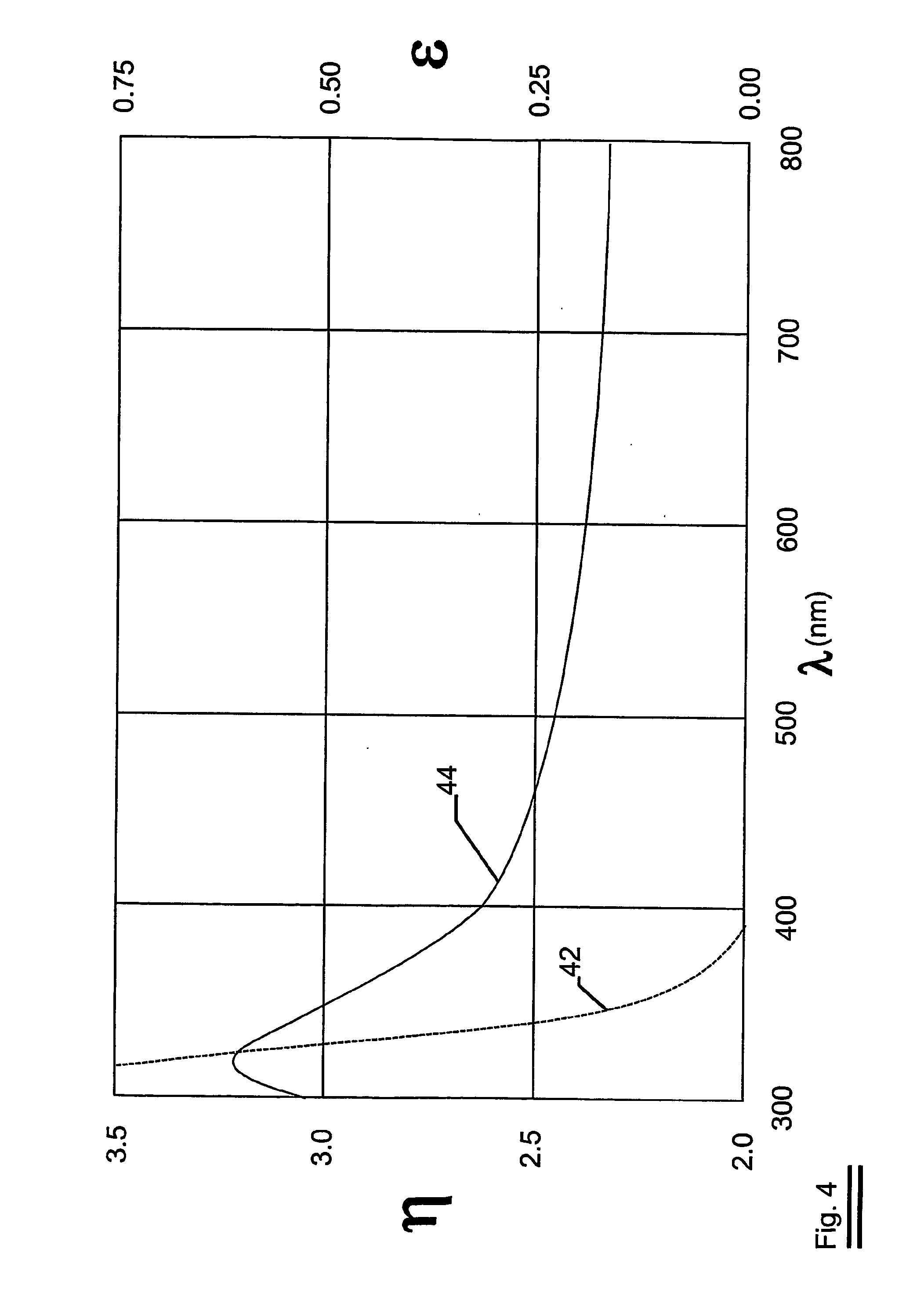Infra-red reflecting layered structure
a layered structure and infra-red technology, applied in the field of infrared reflecting layered structure, can solve the problems of low durability, low stability of silver layer, and negative influence of number and thickness of metal layer on visual light transmittance, etc., to achieve low solar heat gain coefficient, good visual light transmittance, and high stability
- Summary
- Abstract
- Description
- Claims
- Application Information
AI Technical Summary
Benefits of technology
Problems solved by technology
Method used
Image
Examples
Embodiment Construction
[0059] An embodiment of an infra-red reflecting layered structure 10 is shown in FIG. 1. The layered structure comprises three metal oxide layers 12, 14, 16 and two silver containing layers 13,15.
[0060] The metal oxide layers comprise TiO2.
[0061] The TiO2 is obtained by DC magnetron sputtering using rotatable ceramic TiOx targets with x between 1.5 and 1.7. These targets have enough electrical conductivity to be used as cathodes in a DC magnetron sputtering process.
[0062] In FIG. 4, the refractive index (η) and the extinction coefficient (ε) of a TiO2 coatings can be seen. The refractive index (η) in function of the wavelength is given by line 44; the extinction coefficient (ε) of In function of the wavelength is given by line 42.
[0063] For wavelengths higher than 395 nm, the coating is absorption free. The refractive index at 510 nm is 2.41, which corresponds to the rutile phase of TiO2.
[0064] The silver containing layers 12, 14 comprise pure silver (i.e. silver with unavoidab...
PUM
| Property | Measurement | Unit |
|---|---|---|
| light transmittance | aaaaa | aaaaa |
| SHGC | aaaaa | aaaaa |
| refractive index | aaaaa | aaaaa |
Abstract
Description
Claims
Application Information
 Login to View More
Login to View More - R&D
- Intellectual Property
- Life Sciences
- Materials
- Tech Scout
- Unparalleled Data Quality
- Higher Quality Content
- 60% Fewer Hallucinations
Browse by: Latest US Patents, China's latest patents, Technical Efficacy Thesaurus, Application Domain, Technology Topic, Popular Technical Reports.
© 2025 PatSnap. All rights reserved.Legal|Privacy policy|Modern Slavery Act Transparency Statement|Sitemap|About US| Contact US: help@patsnap.com



